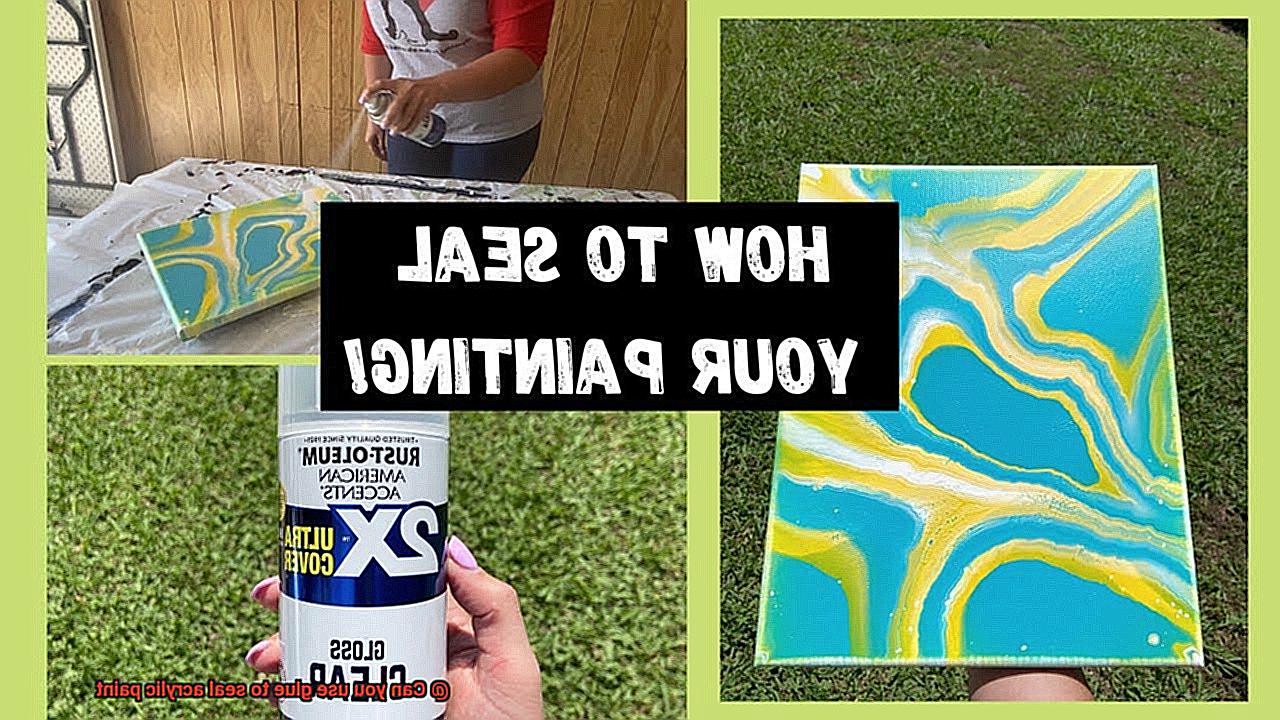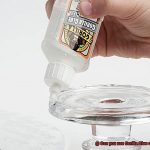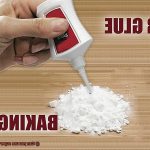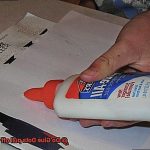Are you an artist who loves to dabble in the mesmerizing world of acrylic paint? If so, you know that sealing your artwork is crucial to preserve its brilliance and beauty. But here’s a surprising twist – have you ever considered using glue as a sealant? Yes, you read that right.
In this blog post, we’re about to embark on an exciting journey into the realm of unconventional techniques. We’ll delve into the captivating concept of using glue to seal acrylic paint and explore its effectiveness, advantages, and drawbacks. Whether you’re a passionate hobbyist or a seasoned pro searching for fresh ideas, get ready to uncover the hidden potential of glue as your secret weapon for safeguarding your acrylic masterpieces.
So, buckle up and prepare to be amazed by this unexpected solution that might just revolutionize your artistic process. Let’s dive deep into the details and find out if glue truly possesses the power to elevate your acrylic creations to new heights.
The Drawbacks of Using Glue as a Sealant
Contents
- 1 The Drawbacks of Using Glue as a Sealant
- 2 Advantages of Using an Acrylic Sealer or Varnish
- 3 Different Types of Acrylic Sealers Available
- 4 Tips for Applying an Acrylic Sealer
- 5 Potential Issues with Applying an Acrylic Sealer to Certain Surfaces
- 6 How to Choose the Right Type of Acrylic Sealer for Your Artwork
- 7 Conclusion
Using glue as a sealant may seem like a quick and easy solution, but it comes with several drawbacks that artists should be aware of. Firstly, glue is not designed to be a sealant. Its primary purpose is to bond materials together, not to protect paint. While it may offer some level of protection, it is not the ideal product for sealing paint.
Another drawback is the limited durability of glue as a sealant. Over time, the glue can deteriorate and lose its effectiveness, leaving the paint vulnerable to damage from moisture, UV rays, and other environmental factors. This lack of durability means that the paint may not stay protected for as long as it would with a dedicated sealant.
Furthermore, depending on the type of glue used, it can potentially cause damage to the painted surface. Some glues contain harsh chemicals or solvents that can react with the paint, causing discoloration or fading. Additionally, if applied unevenly or in excessive amounts, glue can create an uneven texture or interfere with the visual appearance of the artwork.

Removing or modifying the painted surface becomes more challenging when glue is used as a sealant. The glue adheres strongly to the paint, making it difficult to remove without causing damage. This limitation restricts an artist’s ability to make changes or corrections to their artwork in the future.
Moreover, glue is typically more rigid when dry compared to acrylic paint, which has some flexibility. This lack of flexibility can lead to cracking or peeling of the top layer of paint over time.
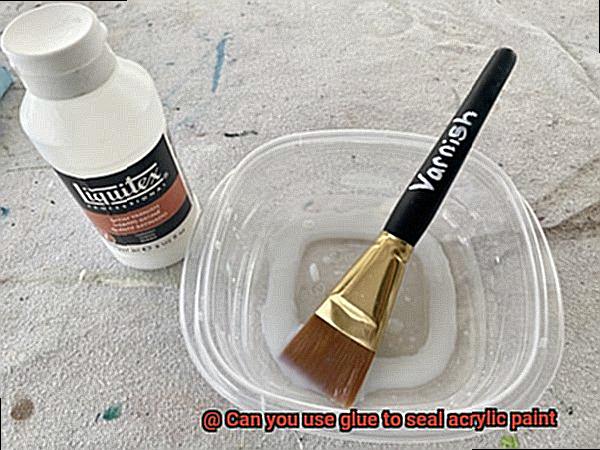
In terms of moisture protection, glue may not provide adequate defense. Since it is not specifically designed as a sealant, moisture can seep through the glued surface and reach the underlying layers of paint. This can result in warping, bubbling, or deterioration over time.
Finally, if an artist is working with mixed media artwork that includes different materials such as paper, fabric, or wood, they need to consider the compatibility of the glue with these materials. Some glues may not adhere well to certain surfaces or may cause damage to delicate materials.
Advantages of Using an Acrylic Sealer or Varnish
- Protection: Applying an acrylic sealer or varnish provides a protective shield for artwork, defending it against moisture, UV rays, dust, and other environmental factors that can degrade the quality of the piece.
- Enhanced Color and Appearance: Acrylic sealers and varnishes have the power to intensify the colors of a painting, making them more vibrant and captivating. Additionally, they offer various finishes like matte, satin, or gloss, allowing artists to choose the desired effect that best complements their artwork.
- Surface Protection: By using a sealer or varnish, artists can safeguard the surface of their work from scratches, abrasions, and other physical damages. This helps maintain the integrity of the artwork and ensures its longevity.
- Easy Application: Acrylic sealers and varnishes are user-friendly and come in different forms such as sprays, liquids, and gels. They also have quick drying times, enabling artists to apply multiple coats or layers without long wait times.
- Longevity: By protecting acrylic paintings from environmental factors that contribute to premature deterioration, sealers and varnishes significantly extend the lifespan of the artwork, allowing it to be enjoyed for years to come.
- Restoration and Maintenance: Acrylic sealers and varnishes are essential tools in restoring and maintaining acrylic paintings. They facilitate easy removal of surface contaminants without damaging the underlying paint layers, ensuring that the artwork remains in pristine condition.
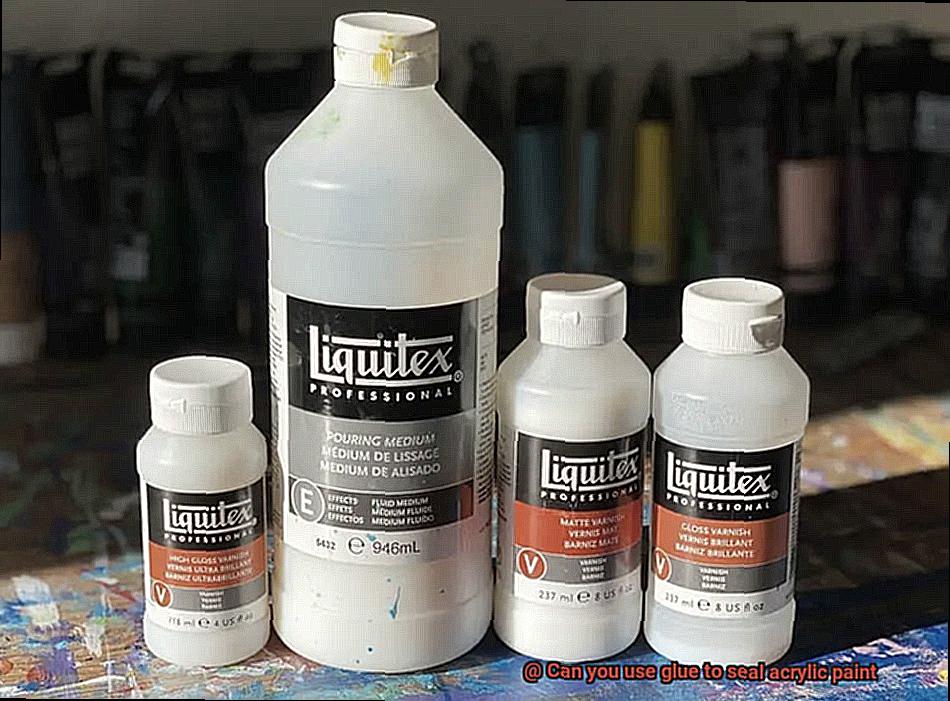
Different Types of Acrylic Sealers Available
Water-based sealers are a popular choice for sealing acrylic paint due to their ease of use and versatility. They are non-toxic, low odor, and dry quickly. Water-based sealers provide a clear, glossy finish that enhances the colors of the paint. They are suitable for both indoor and outdoor use and can be used on various surfaces like canvas, wood, or paper. These sealers are also easy to clean up with soap and water, making them convenient for artists.
Solvent-Based Sealers:
Solvent-based sealers are known for their durability and resistance to moisture, chemicals, and UV rays. They create a strong bond with the paint surface, providing excellent protection against wear and tear.
Solvent-based sealers are commonly used for outdoor applications or areas that require high resistance, such as floors or countertops. However, they have a stronger odor and should be used in well-ventilated areas.

Matte Sealers:
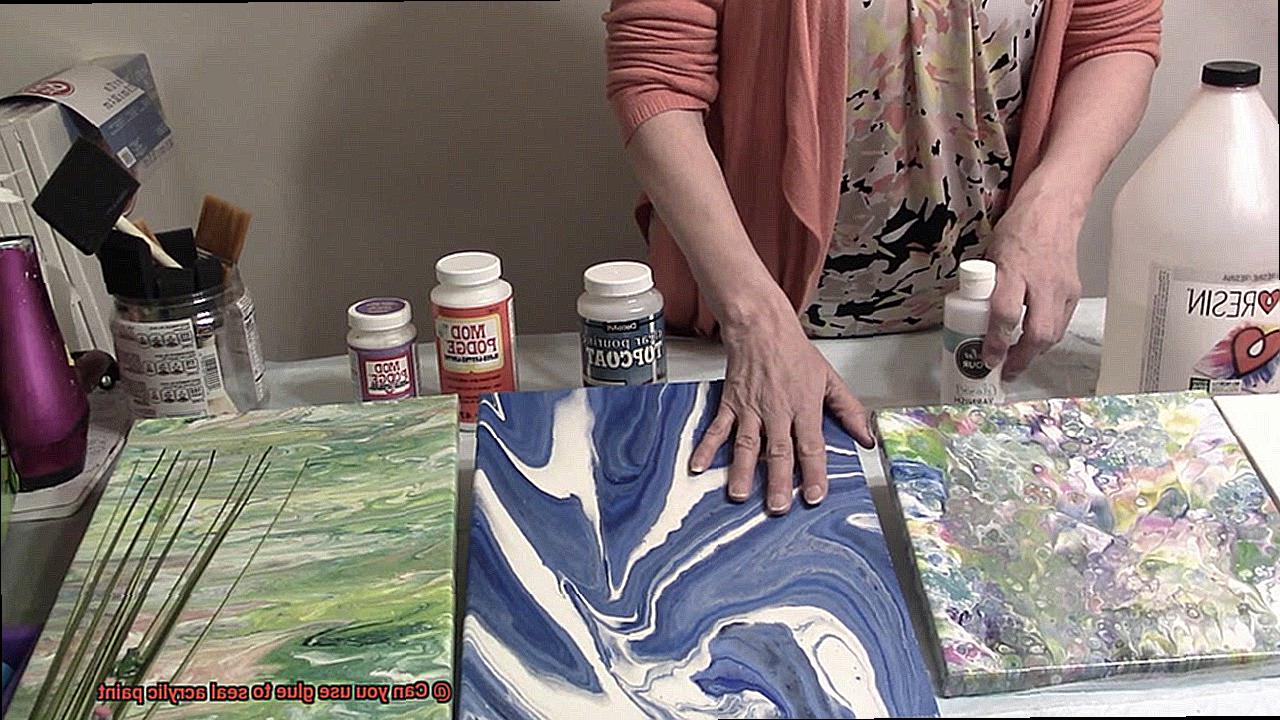
Matte sealers provide a non-shiny finish to the paint surface. They are often used for artwork or surfaces where glare is unwanted, such as paintings or photographs. Matte sealers still offer protection to the paint while maintaining a more subdued appearance. They can be water-based or solvent-based depending on personal preference.
Anti-Slip Sealers:
Anti-slip sealers are specifically designed to provide traction on slippery surfaces. They are commonly used for areas that may become slippery when wet, such as pool decks, patios, or bathroom floors. Anti-slip sealers help prevent accidents by creating a textured surface that increases grip and reduces the risk of slipping.
UV Protection Sealers:
UV protection sealers are an excellent choice for preserving the colors of acrylic paint from fading or yellowing due to exposure to sunlight. These sealers contain additives that block harmful UV rays and prevent damage caused by prolonged sun exposure. UV protection sealers are particularly important for outdoor artwork or paintings displayed in brightly lit areas.
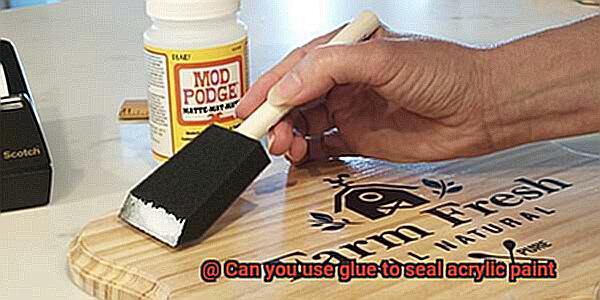
Tips for Applying an Acrylic Sealer
Acrylic sealers are a crucial step in protecting and enhancing acrylic paint finishes. They create a clear, durable, and glossy or matte protective layer over the paint, ensuring its longevity and preserving its vibrant colors. However, to achieve a successful application of an acrylic sealer, proper surface preparation is key.
Prepare the Surface
Before applying an acrylic sealer, it is essential to prepare the surface properly. This involves ensuring that the acrylic paint is completely dry and free from any dust or debris. To achieve this, gently wipe the surface with a damp cloth or use a mild soap and water solution to remove any oils or residues. By doing so, you create a clean canvas for the sealer to adhere to.
Choose the Right Finish
Acrylic sealers come in various finishes such as glossy, satin, and matte. The finish you choose will depend on your personal preference and the desired look of your project. A glossy finish provides a high-shine appearance, while a matte finish offers a more subdued and natural look. Consider your artistic vision and select the finish that best complements your art.
Apply Thin, Even Coats
To achieve an even and professional-looking finish, it is recommended to apply acrylic sealer in thin, even coats. Using a brush or foam applicator, evenly distribute the sealer across the surface, avoiding any thick applications that can result in drips or puddles. Multiple thin coats are preferable over one thick coat as they provide better control and coverage.
Allow Proper Drying Time
Patience is key when applying an acrylic sealer. Allow each coat of sealer to fully dry before applying the next coat. This ensures proper adhesion and prevents smudging or smearing of the paint underneath. Refer to the manufacturer’s instructions for specific drying times as they can vary depending on the type of sealer and environmental conditions.
Work in a Well-Ventilated Area
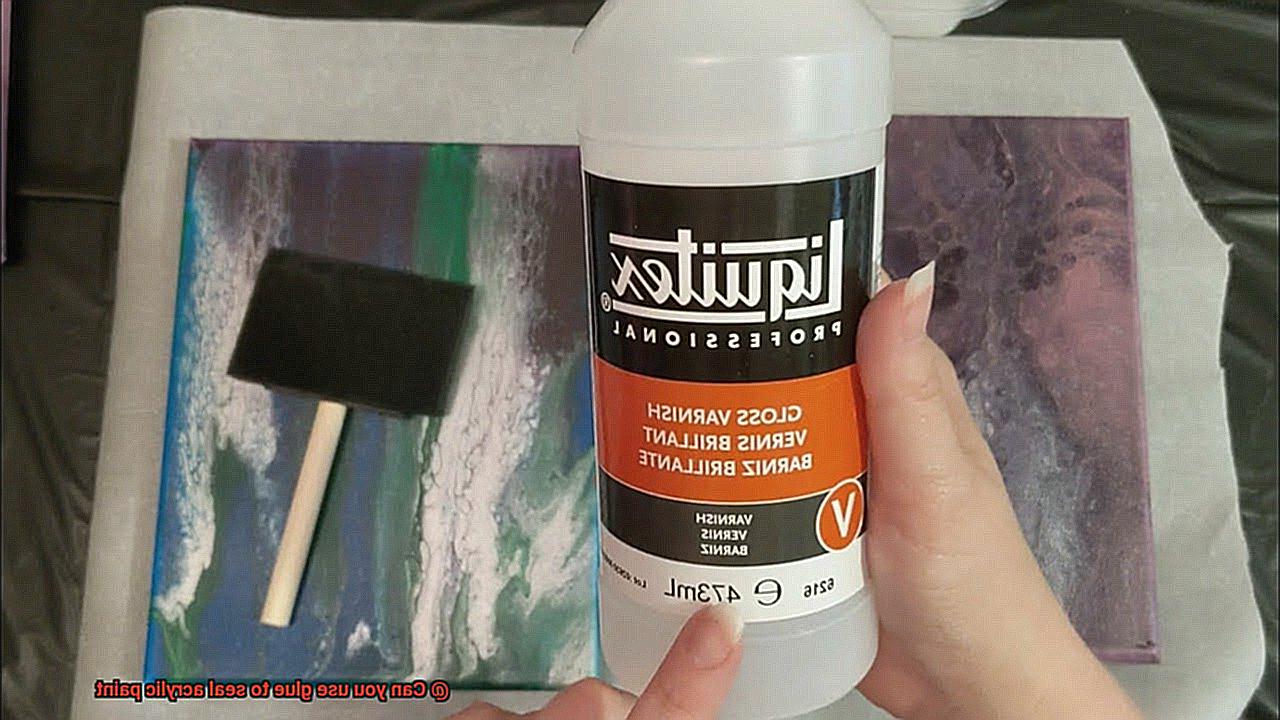
When applying the sealer, ensure you are working in a well-ventilated area to avoid inhaling any potentially harmful fumes. If necessary, wear a mask or use a respirator for added protection. Adequate ventilation not only protects your health but also aids in the drying process by allowing the sealer to evaporate properly.
Potential Issues with Applying an Acrylic Sealer to Certain Surfaces
Applying an acrylic sealer to certain surfaces can be a tricky business, fraught with potential issues that can mar the final result and compromise the durability of the sealer. Let’s delve into some of these potential issues, shall we?
First on our list is poor adhesion. Acrylic sealers have a penchant for not sticking well to non-porous or smooth surfaces like glass, metal, or plastic. It’s like trying to make Velcro stick to a Teflon-coated pan – it just won’t hold up in the long run. So, if you’re planning on sealing your beloved glass masterpiece or chrome-plated sculpture, you might want to reconsider.
Next up is the issue of discoloration. Picture this: you meticulously apply an acrylic sealer to your artwork, only to find that it has turned into an unsightly shade of yellow. What happened? Well, acrylic sealers can sometimes have a rather unpleasant reaction with certain materials, especially those containing oils or chemicals. It’s like mixing oil and water – they just don’t play nice together.
Now, let’s talk about sensitivity to solvents. Acrylic sealers contain solvents that help them dry faster and form a protective film. However, some surfaces just can’t handle these solvents and end up damaged or dissolved. Think delicate fabrics or polystyrene foam – they need to be handled with care before attempting any sealing shenanigans.
Flexibility is another potential stumbling block. If your surface likes to bend and flex like a contortionist at a circus, then acrylic sealers might not be the best fit. They tend to crack and peel when faced with surfaces that have a lot of movement. So, if you’re thinking of sealing your favorite yoga mat or stretchy plastic project, think again.
Last but not least, we have the issue of compatibility with other coatings. If your surface has been previously coated with a different type of paint or finish, it’s essential to ensure that the acrylic sealer plays well with others. Incompatibility can result in a cracked, peeling mess or a finish that’s far from fabulous.
How to Choose the Right Type of Acrylic Sealer for Your Artwork
Choosing the right type of acrylic sealer for your artwork requires careful consideration of several factors. First, determine the purpose of the sealer. Do you want to protect your artwork from dust and dirt, or are you looking to enhance its colors and give it a glossy finish? Understanding your desired outcome will help you select the appropriate sealer.
Next, consider the type of surface you are working with. Acrylic sealers come in various forms, such as sprays, brush-on, or varnishes. Each type is suitable for different surfaces, so it’s crucial to choose one that is compatible with your artwork. For example, if you have a painting on canvas, a brush-on sealer might be more suitable as it allows for better control and coverage.
The finish you desire is also an important factor to consider. Acrylic sealers come in different finishes, such as matte, satin, and glossy. The finish can significantly impact the final appearance of your artwork. A matte finish will give a more subdued and non-reflective look, while a glossy finish will make the colors appear more vibrant and reflective. Satin finishes offer a middle ground between the two.
Additionally, consider the permanence of the sealer. Some acrylic sealers are removable, meaning they can be easily stripped off if necessary. This is particularly useful if you anticipate making any changes or adjustments to your artwork in the future. On the other hand, if you want a more permanent seal that will protect your artwork for years to come, opt for a non-removable sealer.
Lastly, take into account any potential health hazards associated with the sealer. Some acrylic sealers contain chemicals that may be harmful if inhaled or come into contact with skin. If you are sensitive to certain chemicals or prefer more environmentally-friendly options, be sure to choose a sealer that is labeled as non-toxic or eco-friendly.
g4D60fQBXFs” >
Conclusion
In conclusion, relying on glue as a sealant for acrylic paint may seem like a quick fix, but it’s important to weigh the drawbacks. Glue wasn’t designed specifically for sealing and may not offer the same level of protection as dedicated acrylic sealers or varnishes. Over time, it can deteriorate, potentially damaging your artwork and leaving an uneven texture.
On the flip side, using an acrylic sealer or varnish brings a multitude of benefits. These products are specially formulated to shield acrylic paint from moisture, UV rays, dust, and physical harm. They enhance the colors and appearance of your artwork while providing surface protection that ensures its longevity. With various finishes available, applying thin, even coats is a breeze.
When selecting an acrylic sealer, consider factors like its purpose, the surface type you’re working with, desired finish, permanence, and any potential health hazards associated with the product. Water-based sealers are popular for their user-friendly nature and versatility, while solvent-based ones offer durability and moisture resistance. Matte sealers deliver a non-shiny finish ideal for certain types of artwork.
To achieve successful application of an acrylic sealer, proper surface preparation is key. Make sure your painted surface is clean and dry before applying thin coats evenly. Allow each coat to fully dry before adding more layers.

